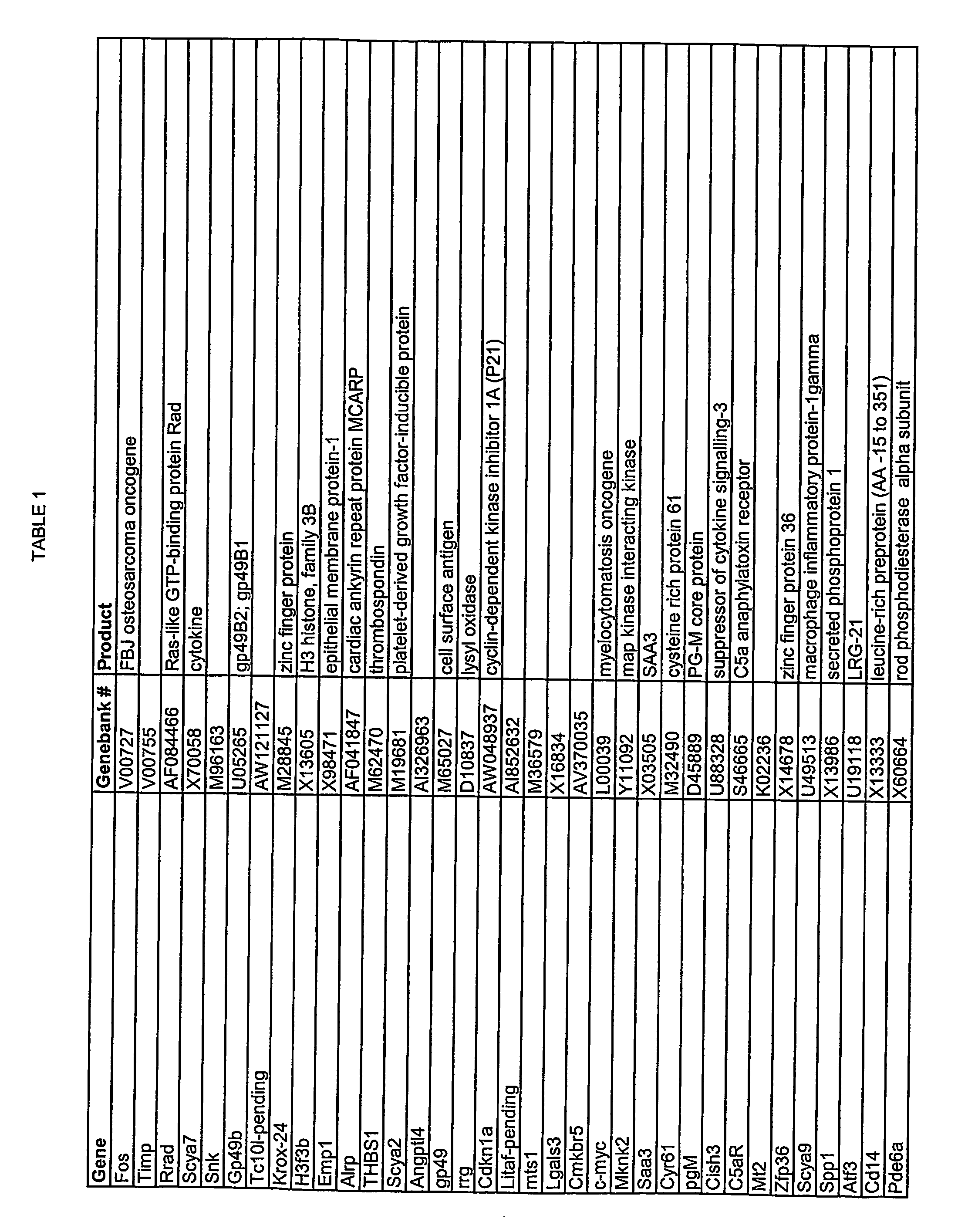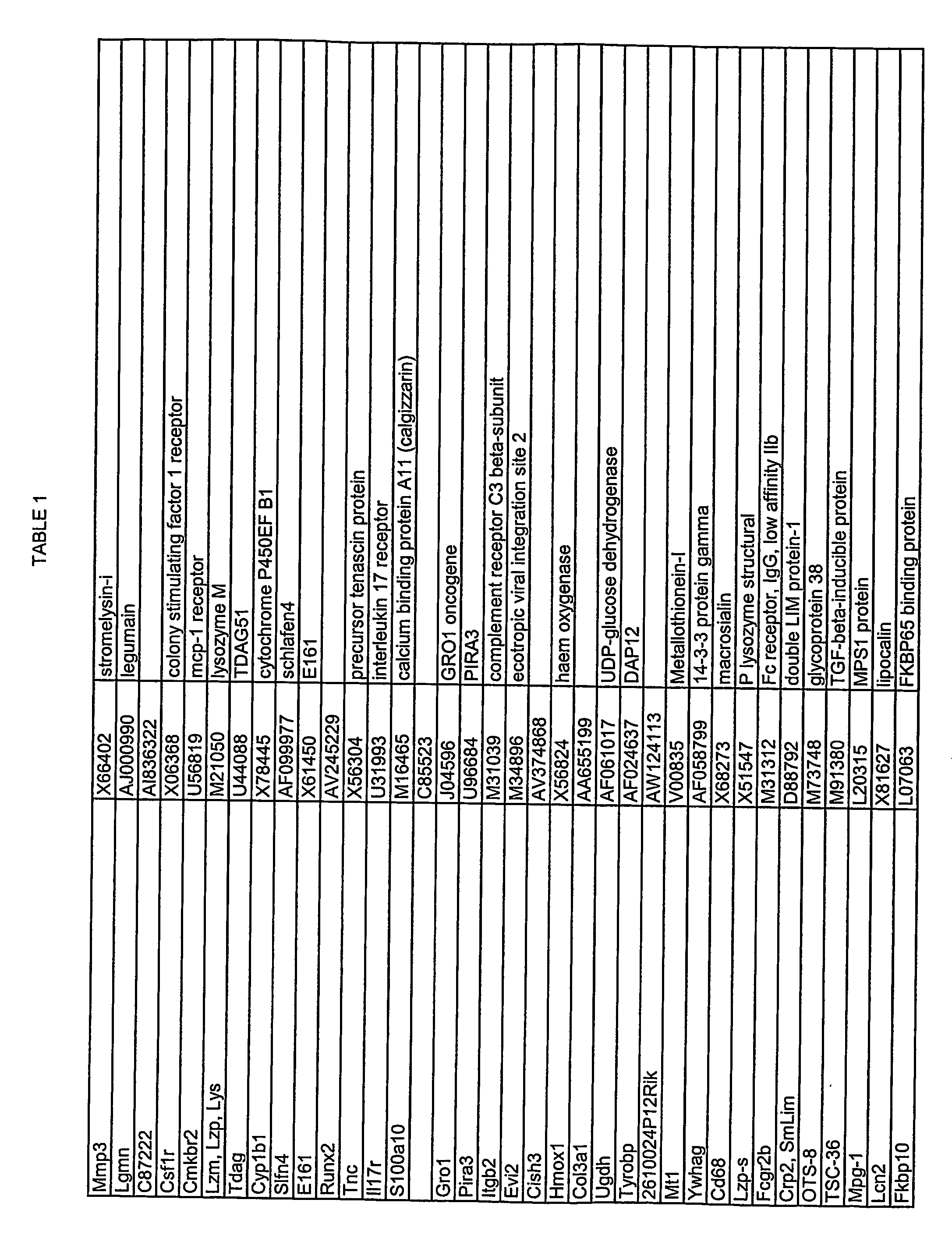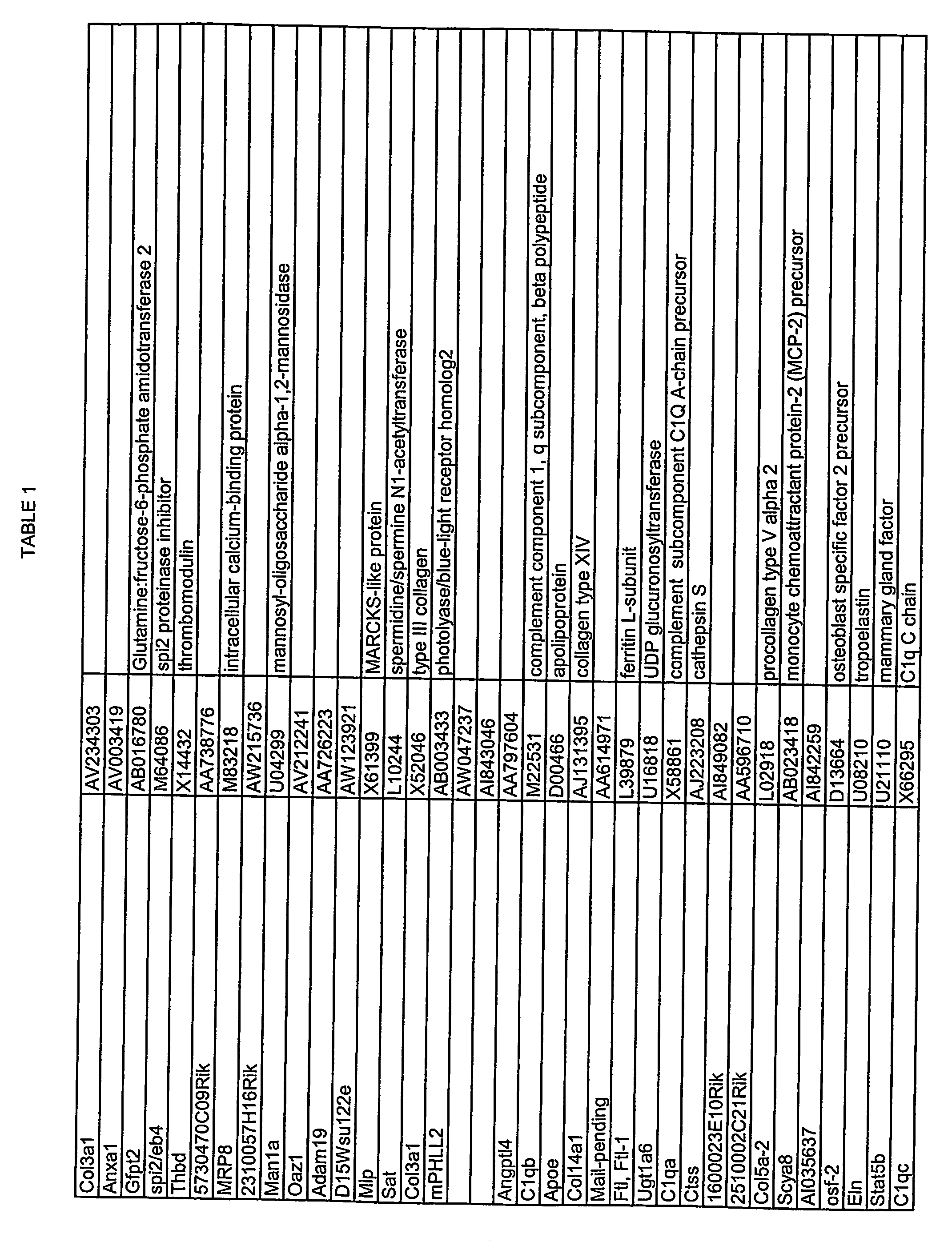Identification of genes involved in angiogenesis, and development of an angiogenesis diagnostic chip to identify patients with impaired angiogenesis
- Summary
- Abstract
- Description
- Claims
- Application Information
AI Technical Summary
Benefits of technology
Problems solved by technology
Method used
Image
Examples
examples
Microarray Analysis of the Mouse Hindlimb
[0072] Isolation of RNA
[0073] Mice underwent femoral artery ligation and extirpation.A control group was treated by sham surgery. Mouse adductor muscles after surgery and sham surgery were collected and flash frozen. Pooled muscles (30-50 mg) were crushed into powder using a mortar and pestle (collected with liquid nitrogen) and then homogenized in 2.5 ml of guanidinium isothiocyanate. Total RNA was extracted using ultracentrifugation on cesium chloride cushion gradient for 24 hours at 4° C. See Sambrook et al supra.
[0074] Target Preparation and DNA Microarray Hybridizations
[0075] For the first strand cDNA synthesis reaction, 5.0-8.0 μg of total RNA was incubated at 70° C. for 10 minutes with T7-(dT) 24 primer, then placed on ice. For the temperature adjustment step, 5X first stand cDNA buffer, 0.1 M DTT, and 10 mM dNTP mix was added and the reaction incubated for 1 hour at 42° C. SSII reverse transcriptase was added, and the reaction inc...
PUM
| Property | Measurement | Unit |
|---|---|---|
| Concentration | aaaaa | aaaaa |
| Solubility (mass) | aaaaa | aaaaa |
| Gene expression profile | aaaaa | aaaaa |
Abstract
Description
Claims
Application Information
 Login to View More
Login to View More - R&D
- Intellectual Property
- Life Sciences
- Materials
- Tech Scout
- Unparalleled Data Quality
- Higher Quality Content
- 60% Fewer Hallucinations
Browse by: Latest US Patents, China's latest patents, Technical Efficacy Thesaurus, Application Domain, Technology Topic, Popular Technical Reports.
© 2025 PatSnap. All rights reserved.Legal|Privacy policy|Modern Slavery Act Transparency Statement|Sitemap|About US| Contact US: help@patsnap.com



